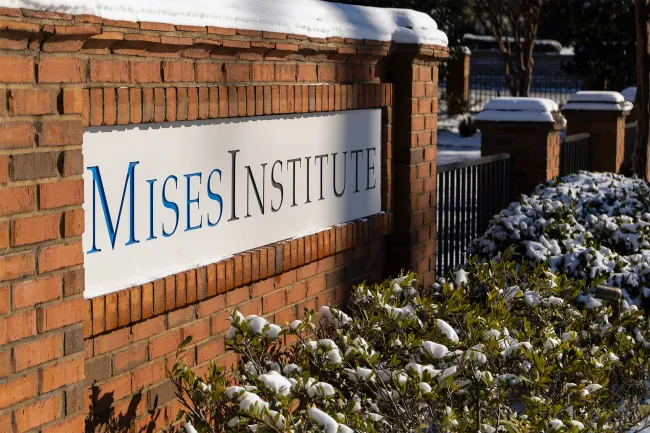There is almost complete unanimity among economists that the most important role of the central bank is to attain price stability. Allegedly, the policy of price stability promotes economic growth and individual well-being.
According to popular thinking, a policy of price stability increases the visibility of the relative changes in the prices of goods and services. This, in turn, enables businesses to identify the changes in the demand-supply conditions of goods and services. By acting on these changes, businesses are abiding by consumers’ wishes thereby contributing to the efficient allocation of resources. According to the former president of the Federal Reserve Bank of New York, William J. McDonough, “Over the long run, price stability is the one sustainable contribution monetary policy can make to growth. This applies to all countries.”
For instance, imagine it is observed that the price of tomatoes increased relative to potatoes. This relative price increase generates incentive for businesses to increase the production of tomatoes versus potatoes. By being able to observe and respond to changes in relative prices, businesses are setting in motion an efficient allocation of resources (i.e., allocation in line with consumer preferences). According to this thinking, as long as inflation—which is defined by popular thinking as general increases in the “price level”—is stable, producers can ascertain changes in relative prices and thus maintain the efficient allocation of resources. However, when inflation is volatile, this makes it much harder for businesses to distinguish between relative price changes and changes in prices that are associated with price inflation. This, in turn, leads to a misallocation of resources and to the loss of wealth.
Assumed Money Neutrality
At the root of price stabilization policies is a view that money is neutral. Changes in money only have an effect on the price level while having no effect on the relative prices of goods and services. For instance, if one apple is exchanged for two potatoes, then the price of an apple is two potatoes or the price of one potato is half an apple. Now, if one apple exchanges for one dollar, then it follows that the price of a potato is half a dollar. Of course, all these relative prices could change based on the supply and demand for apples, potatoes, and dollars. Note that the introduction of money does not alter the relative price of potatoes versus apples, which is a 2:1 ratio. Thus, a seller of an apple will get one dollar for it, which in turn, will enable him to purchase two potatoes.
On this way of thinking, an increase in the quantity of money leads to a proportionate decline in it purchasing power (i.e., a rise in the price level), while a fall in the quantity of money will result in a proportionate increase in the purchasing power of money (i.e., a fall in the price level). All this, however, will not alter the fact that one apple is exchanged for two potatoes, all other things being equal.
Let us say that, as a result of an increase in the quantity of money, the purchasing power of money has halved, or the price level has doubled. This means that now one apple will be exchanged for two dollars while one potato will be exchanged for one dollar. Despite the doubling in prices in this example, an apple seller with two dollars will still be able to purchase two potatoes. The so-called “price level” is observation of “average” prices over time, but this average is nonsensical because it aggregates heterogeneous goods in money prices.
When money is injected, there are always earlier recipients and spenders of the money who benefit from this injection. The early recipients with more money at their disposal can now acquire a greater amount of goods while the prices of these goods remain unchanged. As money moves through the economy, prices of goods begin to rise unevenly, begetting other changes and incentivizing different choices. Consequently, late receivers are disadvantaged by higher prices, lower purchasing power, and instability caused by distortions in the structure of production.
Increases in the money supply cause a redistribution of wealth from later recipients or non-recipients to the earlier recipients and spenders. This shift in wealth alters individuals’ demands for goods and services and, in turn, alters the relative prices, all other things being equal. Hence, changes in money supply set in motion new dynamics that give rise to changes in demands for goods and services and to changes in their relative prices. The effect of changes in the purchasing power of money on goods prices cannot be isolated. The price of a good is determined by the supply and demand for this good and by the supply and demand for money. The effect of changes in the demand and supply of money and the demand and supply of goods on the prices of goods is intertwined and there is no way that one can isolate these effects.
If, for example, it was observed that over a time period of one year the price of tomatoes increased by 10 percent while the price of potatoes went up by 2 percent, this information, cannot tell us how much of the increase in prices was due to changes in the supply and demand for goods and how much is because of changes in the demand and the supply for money. Given that it is impossible to isolate the monetary effect on individual prices of goods, obviously the whole idea that one can measure and somehow stabilize the “price level” is questionable. Rothbard wrote,
Since the general exchange-value, or PPM, of money cannot be quantitatively defined and isolated in any historical situation, and its changes cannot be defined or measured, it is obvious that it cannot be kept stable. If we do not know what something is, we cannot very well act to keep it constant.
Total Purchasing Power of Money (PPM) Cannot be Established Conceptually
Furthermore, when one dollar is exchanged for one loaf of bread, we can say that the purchasing power of one dollar is one loaf of bread. If one dollar is exchanged for two tomatoes, then this means that the purchasing power of one dollar is two tomatoes. However, the information regarding the specific purchasing power of money does not allow the establishment of the total purchasing power of money. It is not possible to ascertain the total purchasing power of money since we cannot add up two tomatoes to the one loaf of bread. We can only establish the purchasing power of money with respect to an array of goods for which it will exchange at a given point in time and at a given place.
Conclusion
For most economists, the key to healthy economic fundamentals is price stability. A stable “price level” is supposed to lead to the efficient use of the economy’s scarce resources, and hence, results in better economic fundamentals. However, note that the so-called stable monetary policy that allegedly generates stable increases in the price index still increases in the money supply. This sets in motion distortions of the structure of production and the menace of the boom-bust cycle. Further, stable prices can be misleading, masking the effects of monetary inflation when coupled with genuine production that lowers costs and prices. According to Murray Rothbard,
The fact that general prices were more or less stable during the 1920’s told most economists that there was no inflationary threat, and therefore the events of the great depression caught them completely unaware.
Given that present-day economists are following exactly the same line of thinking, it is quite likely that the Fed’s policy of price stability may catch economists again unaware of the damage inflicted by inflationary monetary policy.


